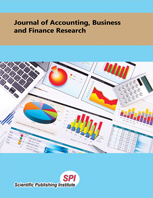Determinants of Bank Funding for Tunisian SMEs in the Context of Information Asymmetry
DOI:
https://doi.org/10.20448/2002.131.1.14Keywords:
Small, Medium-sized enterprises, Bank financing, Information asymmetry, Multiple regression.Abstract
This paper explores the determinants of access to finance for small and medium enterprises (SMEs) in the context of asymmetric information. The sample consists of 250 Tunisian SMEs financed by the Arab International Bank of Tunisia, broken down by sector according to activity, size and region. The results of multiple linear regressions showed that size, interest rate, trade credits and profitability have a significant influence on the total volume of credit. The bank considers the size of commercial and industrial SMEs, and those located in the District of Tunis and the Central East, as a positive signal when considering a loan. The bank also considers high interest rates when considering giving loans to commercial SMEs, micro-enterprises and SMEs located in the District of Tunis. As far as innovation is concerned, the results showed that service SMEs, micro-enterprises and SMEs located in the District of Tunis and in the Central East find it difficult to get credit. It is interesting to note that the bank neglects liquidity issues and the net worth of the SME in its financing decision, which contradicts the theoretical assumptions. Finally, it is concluded that bank's financing of Tunisian SMEs is characterized by conditions dominated by the problem of asymmetric information.


